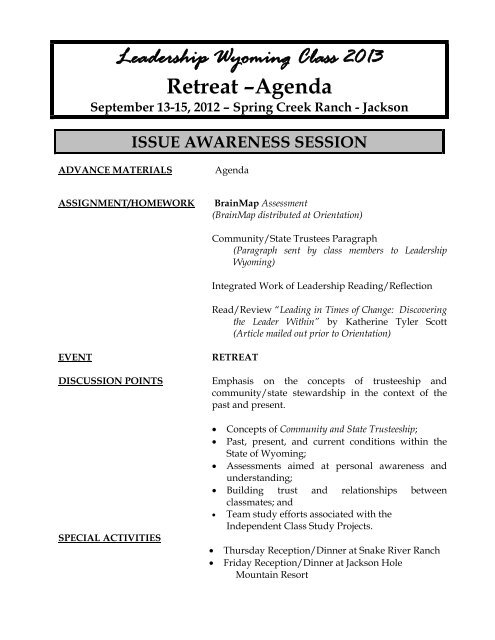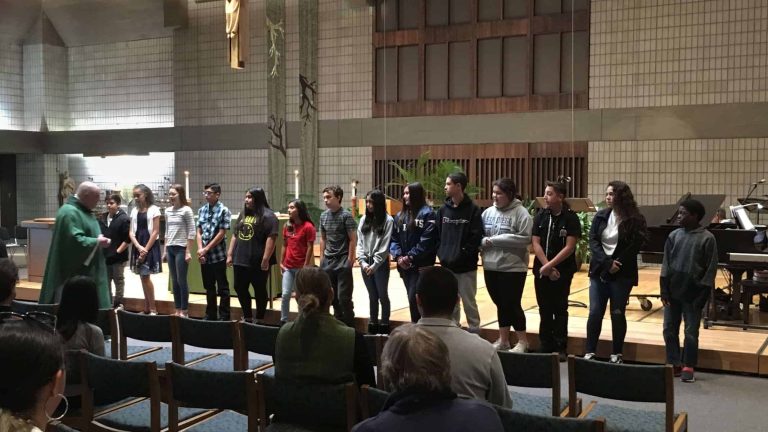Leadership Retreat Activities
Leadership retreat activities are important for enhancing team collaboration, fostering creativity, and developing effective communication skills. In order to achieve these goals, organizations often incorporate team building exercises, leadership workshops, outdoor adventure activities, and strategic planning sessions into their retreat programs.
These activities not only provide an opportunity for participants to learn and grow as leaders but also create a positive and supportive environment for team members to bond and develop stronger relationships. By engaging in a variety of activities designed to challenge and inspire, leadership retreats can be a transformative experience that empowers individuals to become more effective leaders within their organizations.
1. Icebreaker Activities
Icebreaker activities are a crucial part of any Leadership Retreat, as they help bring participants together, build rapport, and set a positive tone for the rest of the event. These activities are designed to break the ice and create a comfortable and engaging environment for attendees to get to know each other better. Here are two popular icebreaker activities that can be incorporated into your Leadership Retreat.
1.1 Name Tag Game
The Name Tag Game is a simple yet effective icebreaker activity that encourages participants to interact with one another. It is particularly helpful if attendees are not already familiar with each other. To play the game, all participants are given a name tag upon arrival, and they are tasked with wearing the name tag with a name that does not belong to them. The objective is for individuals to locate the rightful owner of the name tag they are wearing by asking questions and engaging in conversations.
This activity not only helps break the ice but also promotes active listening and communication skills. It encourages participants to interact with one another and learn more about their peers in a fun and exciting way. The Name Tag Game allows attendees to step out of their comfort zones and initiates conversations that may not have happened otherwise. By the end of the activity, participants will not only have found their correct name tags but also have formed initial connections with their fellow retreat attendees.
1.2 Human Knot
The Human Knot is a physically engaging and challenging icebreaker activity that requires teamwork and cooperation. It is suitable for smaller groups and encourages participants to communicate effectively while problem-solving. To begin, participants stand in a circle and reach across the circle to hold hands with two other people, forming a tangled “knot” of interconnected individuals.
The challenge is for the group to untangle themselves without letting go of each other’s hands. Participants must work together, communicate, and strategize in order to unravel the knot. This activity not only promotes collaboration and problem-solving skills but also fosters trust and camaraderie within the group.
The Human Knot is an excellent icebreaker activity that helps participants break down barriers and get to know each other better. It encourages teamwork, physical interaction, and creative problem-solving, setting a positive tone for the rest of the retreat.

Credit: www.pinterest.com
2. Team Building Activities
Team building activities are an essential part of a leadership retreat. These activities help foster collaboration, communication, and trust among team members. By engaging in fun and challenging tasks, participants can develop a sense of camaraderie and enhance their problem-solving skills. Here are two team building activities that are sure to ignite enthusiasm and promote unity.
2.1 Trust Fall
The trust fall activity is a classic team building exercise that requires one individual to fall backward, relying on their teammates to catch them. This activity not only promotes trust among team members but also encourages effective communication and problem-solving. It tests their ability to listen, coordinate, and support each other.
In this activity, the team forms a circle with one participant standing in the center. The participant closes their eyes, crosses their arms over their chest, and falls backward, relying solely on their teammates to catch them. This exercise helps build trust among team members as they step out of their comfort zones and rely on one another.
By practicing the trust fall, leaders can assess the level of trust within their teams and identify areas for improvement. This activity can reinforce the importance of trust in achieving common goals and encourage individuals to rely on each other’s strengths.
2.2 Blindfolded Obstacle Course
The blindfolded obstacle course is an engaging activity that requires teamwork, communication, and trust. This activity aims to enhance problem-solving skills, decision-making abilities, and trust among team members.
In this activity, team members are paired up, with one person blindfolded and the other serving as their guide. The blindfolded participant must navigate through an obstacle course guided only by the instructions of their partner. The course can include various challenges such as crawling under ropes, stepping over hurdles, or maneuvering through a maze.
This activity encourages individuals to trust their partners as they rely on their guidance to navigate the course successfully. It also highlights the importance of effective communication and active listening when working towards a shared objective.
By completing the blindfolded obstacle course, teams can reflect on the significance of trust, communication, and collaboration within their group. This activity provides a hands-on experience that reinforces the value of teamwork and strengthens the bonds among team members.
3. Problem-solving Activities
Leadership retreats often include various activities aimed at fostering problem-solving skills among participants. These activities provide opportunities for individuals to work together, think creatively, and find solutions to challenging situations. By engaging in problem-solving activities, leaders can enhance their critical thinking abilities and learn effective techniques to address obstacles that may arise in their personal and professional lives.
3.1 Marshmallow Challenge
The Marshmallow Challenge is a popular problem-solving activity that requires participants to work cooperatively in teams. The goal is simple: build the tallest freestanding structure using only spaghetti sticks, tape, and a single marshmallow. This activity encourages creativity, communication, and collaboration among team members as they try to construct a stable tower within a given time frame.
Key Benefits of the Marshmallow Challenge:
- Encourages teamwork and collaboration.
- Promotes innovative thinking and problem-solving skills.
- Enhances communication and interpersonal skills.
- Provides a hands-on experience of dealing with limited resources and time constraints.
3.2 Escape Room
Escape rooms have gained popularity as an engaging problem-solving activity for leadership retreats. In an escape room, participants are tasked with solving a series of puzzles, riddles, and challenges in order to unlock the door and “escape” within a designated time limit. This activity tests participants’ ability to think critically, work under pressure, and collaborate as a team to solve complex problems.
Key Benefits of Escape Room Activities:
- Promotes teamwork and cooperation among participants.
- Encourages logical thinking, attention to detail, and analytical skills.
- Improves decision-making and problem-solving abilities.
- Fosters effective communication and leadership qualities.
4. Communication Activities
Discover a range of communication activities at our leadership retreats, designed to enhance teamwork and collaboration. Engage in interactive exercises that promote effective communication skills and foster strong relationships among participants.
When it comes to honing leadership skills, effective communication is essential. These activities help individuals develop strong communication skills and enhance their ability to convey information clearly and succinctly.4.1 Telephone Game
The Telephone Game is a classic activity that challenges participants to communicate effectively while also highlighting the importance of active listening. Here’s how it works: 1. Form a circle and ensure everyone can see and hear each other clearly. 2. Choose a simple and short message, such as a phrase or sentence, and whisper it to the person next to you. 3. That person then whispers what they heard to the next person, and so on, until the message reaches the final person in the circle. 4. The last person shares out loud what they heard, and the initial message is compared to the final one. This activity demonstrates how information can get lost or distorted during the communication process. It encourages participants to pay attention to details and communicate their understanding accurately.4.2 Storytelling Circle
The Storytelling Circle activity promotes effective communication through storytelling and active listening. This engaging activity allows participants to practice their communication skills while building connections. Here’s how to conduct a Storytelling Circle: 1. Gather the group in a circle and provide a prompt or theme for the stories. It could be something like “a memorable leadership experience” or “an important lesson learned.” 2. Begin the circle by sharing your own story related to the prompt, modeling effective storytelling techniques, and capturing the audience’s attention. 3. After finishing the story, choose the person sitting next to you to share their story, and continue around the circle until everyone has had a chance to share. 4. Encourage active listening by asking questions or discussing the themes presented in each story. During this activity, participants learn the art of storytelling and understand the impact of effective communication on engagement and connection. It also allows individuals to discover common experiences and perspectives, fostering a sense of unity among the team. These communication activities provide invaluable opportunities for leaders to strengthen their communication skills. Through the Telephone Game and Storytelling Circle, individuals develop the ability to convey information clearly, actively listen, and connect with others on a deeper level. So, consider incorporating these activities into your next leadership retreat to enhance communication skills and foster a more cohesive and effective team.5. Leadership Development Activities
Leadership development activities are an essential part of any effective leadership retreat. These activities provide opportunities for participants to enhance their leadership skills, build stronger teams, and develop a deeper understanding of their own strengths and weaknesses. In this section, we will explore two key leadership development activities: group projects and role-play scenarios.
5.1 Group Projects
Group projects are a fantastic way to foster collaboration and teamwork within a leadership retreat. These activities encourage participants to work together towards a common goal, challenging them to apply their leadership skills in a practical setting. By dividing tasks and sharing responsibilities, individuals can learn to communicate effectively, delegate tasks, and make collective decisions. Each member brings their unique strengths to the project, creating a dynamic and diverse group dynamic that promotes innovation and problem-solving.
Benefits of Group Projects:
- Enhances teamwork and collaboration
- Develops communication and delegation skills
- Fosters problem-solving and critical thinking
- Encourages innovation and creativity
5.2 Role-play Scenarios
Role-play scenarios offer a safe and interactive environment for leadership development. These activities allow participants to step into different leadership roles and experience real-life scenarios. By immersing themselves in these simulated situations, individuals can practice decision-making, problem-solving, and effective communication. These scenarios often involve challenging circumstances that leaders commonly face, such as conflict resolution, motivating teams, or managing change. Through role-play, participants can gain valuable insights into their own leadership style, identify areas for improvement, and learn how to handle various challenges with astuteness and confidence.
Benefits of Role-play Scenarios:
- Improves decision-making and problem-solving skills
- Enhances communication and negotiation abilities
- Builds self-awareness and adaptability
- Develops empathy and understanding for different perspectives

Credit: www.yumpu.com

Credit: www.outbackteambuilding.com
Frequently Asked Questions Of Leadership Retreat Activities
What Are Some Popular Leadership Retreat Activities?
Some popular leadership retreat activities include team-building exercises, workshops on communication and problem-solving, and outdoor adventure challenges.
How Can Leadership Retreat Activities Benefit A Team?
Leadership retreat activities can benefit a team by improving communication and collaboration skills, fostering trust and camaraderie, and enhancing problem-solving abilities.
What Should I Consider When Planning Leadership Retreat Activities?
When planning leadership retreat activities, consider the objectives and goals of the team, the preferences and abilities of team members, and the desired outcomes of the retreat.
Conclusion
To sum up, a well-planned leadership retreat can not only offer valuable bonding and team-building opportunities, but also provide a platform for personal and professional growth. The range of activities, whether adventure-based or focused on self-reflection, ensure a comprehensive experience that caters to diverse needs.
By embracing these activities, leaders can foster stronger connections, enhance communication, and empower their teams to excel in their roles. So, make the most of your next leadership retreat and unlock the potential within!





